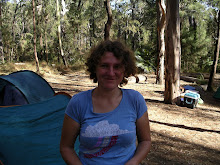I have used Google Earth for a few years now and still enjoy looking at my mum's house in London and fly over the Cornish beaches that I used to swim. I still experience the wonder of having the world at my fingertips. There are many uses for Google Earth in the classroom as it provides a realistic base for learning and gives the freedom to choose a number of functions to investigate the globe. Basic hypothesis like 'does Poland have any beaches?' to 'what countries do I pass to arrive in London from Sydney?' This sounds simple, but you have the question, method, action, result and review - 'could I have done it better?'. This is teaching the skills to use your knowledge - a reflection on Mode 2 knowledge (Gibbons et al 1994).
Gibbons et al (1994) commented on the constant changes in the production of knowledge and use in the changing knowledge economy that we live in. He recognised that knowledge comes from multiple and diverse sites all over the world with the help of ICT. With the world wide web changing communication access and collaborative work, all knowledge is accountable and transdisciplinary. The quality control of market acceptability of knowledge as a commodity including peer reviews forces flexibility. Reflecting on this it is what you do with knowledge rather than how you get it. I do not need to know all the countries in Africa off by heart when I can fly there with Google Earth. I do need to know how to problem-solve to learn the steps to take me there so I can use the skills again to manage more knowledge. This highlights the importance of higher order thinking skills, creativity and social skills to succeed in an ever changing economy.
While investigating Google Earth and related blogs I discovered Web.2.0. As you realise from the blog title, Google Earth is a Web.2.0. This term is associated with web applications that "facilitate interactive information sharing, user-centred design and collaboration on the world wide web" (Wikipedia). You have control over the data on these web sites and can run software through the browser. All the applications I have reviewed and linked with Engagement Theory (Kearsley & Shneiderman 1999) are listed here - blogs, wikis, social-networking site and video-sharing sites. All encourage collaborative project-based tasks with clear outcomes for an authentic audience. There is a 'Learning with Technology Profile Tool' that engages with this theory and can guide your current practice through a series of questions. I found it useful to print out the questions and have as a guide to task ideas.
As I looked deeper into this technology I discovered Tag Cloud generation. I have seen it online before, but never tried. As a learning manager I have a commitment to actively search for new and changing technology. I made the tag cloud below by linking it to my blog. The software has chosen the words, but I have not set up any hyperlinks. You can choose on some sites rather than just linking. I like the feel my cloud gives about my blog though it does not have any obvious tag pattern. This may be a useful tool when considering the personalities and emotional styles of your students.
learning block template body background page wrapper url http blogblog dots gif repeat header main fix long text breaking sidebar float content bottom line link img post body footer uncustomized author right comment elements icon_comment_left blog pager bullet profile layout april youtube classroom school amazing world video photographs clips online students access internet authentic work presentations used topic tool may way time find teacher limited download first powerpoint posted johanna comments reactions image manipulation slide show together shot using great information essential having wiki memory working same cooper pictures learners pickering university education edutopia voki advisers solve complete report knowledge weather
When reflecting on Carl Jung's typology I wonder how different the Tag Cloud created by an extravert compared to an intravert, a pratical person compared to an imaginative and a thinker compared to a feeler? Asking them to use words that are relevent to how they feel or percieve themselves. It is essential to know your learners so you can provide the right learning experience.
At this stage in my blog I am starting feel comfortable with the theory and the technology's connections. I am starting to feel confident with uses ICTs in the classroom and want to experiement. To keep up with the changes in technology I will continue to read blogs, forums, wikis and find practical communities of practice.
Happy flying on Google Earth,
Johanna
Subscribe to:
Post Comments (Atom)

No comments:
Post a Comment